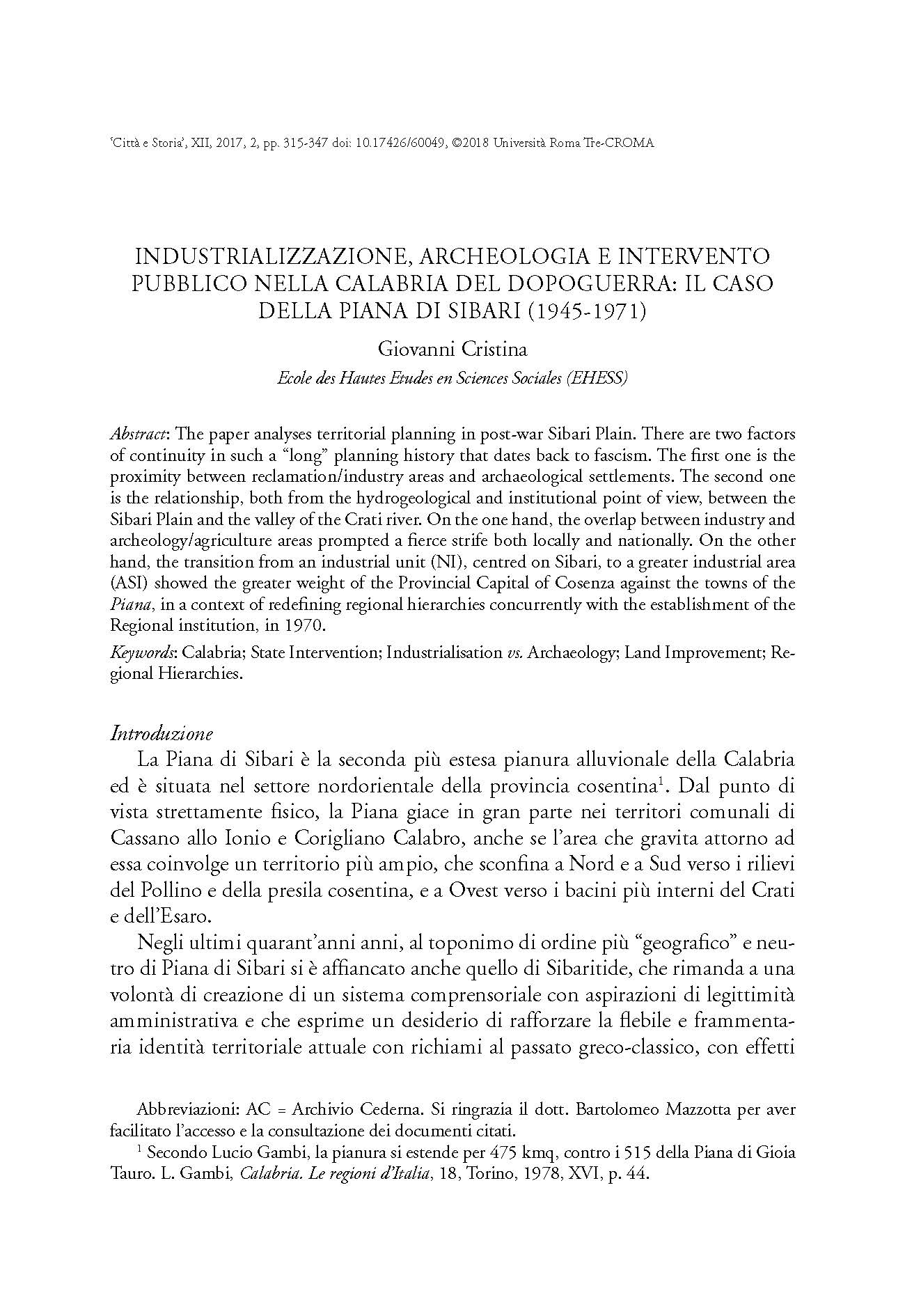Industrializzazione, archeologia e intervento pubblico nella Calabria del dopoguerra: il caso della Piana di Sibari (1945-1971)
6,00 €
The paper analyses territorial planning in post-war Sibari Plain. There are two factors
of continuity in such a “long” planning history that dates back to fascism. The first one is the
proximity between reclamation/industry areas and archaeological settlements. The second one
is the relationship, both from the hydrogeological and institutional point of view, between the
Sibari Plain and the valley of the Crati river. On the one hand, the overlap between industry and
archeology/agriculture areas prompted a fierce strife both locally and nationally. On the other
hand, the transition from an industrial unit (NI), centred on Sibari, to a greater industrial area
(ASI) showed the greater weight of the Provincial Capital of Cosenza against the towns of the
Piana, in a context of redefining regional hierarchies concurrently with the establishment of the
Regional institution, in 1970.
The paper analyses territorial planning in post-war Sibari Plain. There are two factors
of continuity in such a “long” planning history that dates back to fascism. The first one is the
proximity between reclamation/industry areas and archaeological settlements. The second one
is the relationship, both from the hydrogeological and institutional point of view, between the
Sibari Plain and the valley of the Crati river. On the one hand, the overlap between industry and
archeology/agriculture areas prompted a fierce strife both locally and nationally. On the other
hand, the transition from an industrial unit (NI), centred on Sibari, to a greater industrial area
(ASI) showed the greater weight of the Provincial Capital of Cosenza against the towns of the
Piana, in a context of redefining regional hierarchies concurrently with the establishment of the
Regional institution, in 1970.

